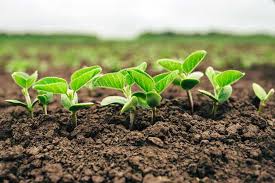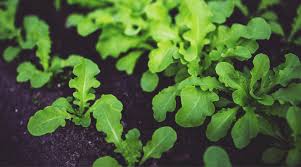
Nutrients in Plants
Plant nutrients are chemical elements that are essential for the nutrition of plant health. Plant nutrients fall into three categories, all of which are based on plant needs, not on the importance of individual elements. Each plant nutrient plays an important role in plant development.
The three categories of plant nutrients are primary nutrients, secondary nutrients, and micronutrients.
Read more:Nutrition Needs When you’re over 50 – Healthy Eating for Older Adults
1. Primary Nutrients
Nitrogen (N), phosphorus (P), and potassium (K), These essential elements are used in higher quantity by the plant than those falling in the other two categories. Additionally, these three elements play important functions in plant biology.
Nitrogen is essential for the formation of proteins, produces carbohydrates, and is essential for plant cell division (growth). Phosphorus affects root growth, seed formation, and plant maturation. Finally, potassium is important in disease resistance, fruit formation, and effect plant enzymes.
2. Secondary nutrients
Calcium (Ca), magnesium (Mg), and sulfur (S), these These elements, although they are not necessary in high amounts, are essential for the health of the plant. Sulfur helps develop vitamins, aids in seed production, and is an integral part of making amino acids.
Magnesium is a major component in chlorophyll production, and helps plants to use phosphorus and iron. Calcium, like other secondary nutrients, plays many roles in regulating plant system functions such as respiration and cell division. However, calcium plays a very important role in some plants. For example, it is essential for the development of a nut in peanuts.
3. Micro Nutrients
These are required in much smaller amounts than other plant nutrients, but are essential for growth and development. Plant micronutrients are boron (B), chlorine (Cl), copper (Cu), iron (fe), manganese (Mn), molybdenum (Mo), and zinc (Zn). All these micronutrients aid in many different roles in plant biology. Many of them, like copper, play a major role in photosynthesis and reproduction.

Read more:How Much Quantity of Nutrients Do men Need?
Process of Nutrition in Plants
Green plants make their own food from carbon dioxide and water using energy from sunlight in the presence of chlorophyll, a process known as photosynthesis. Green plants also need thatch to get energy. All living organisms require energy to perform various actions.
Plants make their food in the presence of sunlight and hence they are autotrophs. Plants convert sunlight energy into chemical energy. They use carbon dioxide, water, and sunlight to cook their food in the presence of chlorophyll.
There are two types of nutrition in plants. They are:
1. Autotrophic nutrition
2. Heterogeneous nutrition
1. Autotroph
In the autotrophic mode of nutrition organisms make their own food with the help of simple inorganic materials like carbon dioxide and water in the presence of sunlight. In addition, organic food in nutrition is made up of inorganic substances.
Green plants have an autotrophic mode of nutrition. These organisms are called autotrophs. Autotrophs have a green color called chlorophyll that helps trap sunlight. They use sunlight to make food through the process of photosynthesis. Food produced by autotrophs is also used by humans and animals.
2. Heterotroph
Heterotrophic organisms are those that receive food from other organisms. Since these organisms depend on other organisms for their living, they are called consumers. Fungi-like and non-green plants fall under this category.
Nutrition in Plants
Green plants synthesize their own food by the process of photosynthesis.It means light and synthesis means creation, so photosynthesis means ‘making from light’. In the presence of chlorophyll, plants manufacture food in sunlight from inorganic materials such as carbon dioxide and water. Green plants make their food through photosynthesis. Chlorophyll is present in green colored bodies called chloroplasts. The leaves of the plant are green due to the presence of chlorophyll.
Food is prepared in the green leaves of the plant. Carbon dioxide is required to make food which is taken up by air. Carbon dioxide enters the leaves through small pores called stomata. The water required for cooking is taken from the soil.
This water is carried through the roots and stem in the leaves. Sunlight provides energy to drive the chemical reactions and chlorophyll present in the green leaves which helps in absorbing this energy. Oxygen is produced in this process as a by-product that leaks out into the air.
The food prepared by the leaves is in the form of simple sugar called glucose. This glucose is then sent to other parts of the plant. Excess glucose is stored in the leaves of the plant in the form of starch. Glucose and starch belong to a category called carbohydrates. In this way green plants convert sunlight into chemical energy.

Read more:The Most Important 6 Things about Nutrition
Photosynthesis process:
1. The energy from sunlight is absorbed by chlorophyll.
2. The energy of sunlight is converted into chemical energy and water
3. Is divided into hydrogen and oxygen.
4. Carbon dioxide reduces into hydrogen to form carbohydrates like glucose.
It is not necessary that these stages of photosynthesis occur only after each other.
Prerequisites for photosynthesis:
1. The sunlight
2. Chlorophyll
3. Carbon dioxide
4. Water.
